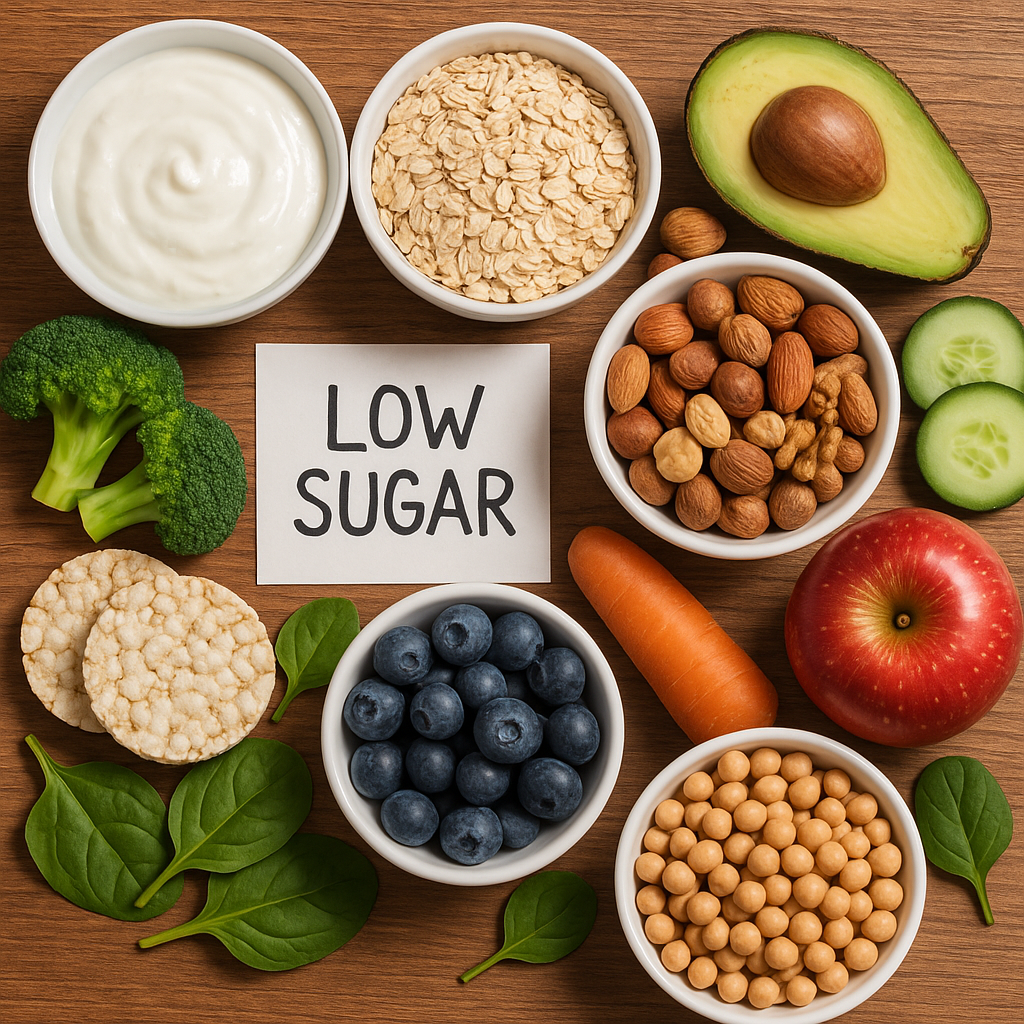Low-sugar foods are foods that contain no more than 5 grams of natural or added sugar per 100 grams of product. In today’s world, where processed foods often contain large amounts of sugar, making conscious choices about foods that are lower in sugar is becoming increasingly important. Reducing sugar intake helps control weight, reduces the risk of diabetes, heart disease, and improves overall well-being. Choosing the right foods not only helps lower blood sugar levels, but also positively affects gut health, which is one of the most important factors in overall well-being.
In this article, we will review 11 foods that are low in sugar, discuss their health benefits, and provide practical advice on how to incorporate them into your daily diet. You will learn why it is important to choose low-sugar foods, how to recognize them, and how to reduce your overall sugar intake.
Why choose low-sugar foods?
Reducing your sugar intake has a direct impact on your health. The World Health Organization recommends that added sugars should not exceed 10% of daily energy needs, and ideally less than 5%. According to the Lithuanian Ministry of Health, the average Lithuanian consumes significantly more sugar than recommended.
Reducing sugar consumption helps stabilize blood sugar levels, reduces the risk of diabetes and helps prevent energy spikes during the day. Excess sugar consumption is associated with an increased risk of heart disease, obesity and even some types of cancer. In addition, studies show that a lower sugar content in the diet can improve skin condition and slow down the aging process.
Nutritionists note that switching to a diet with less sugar helps people feel more clearly about real hunger and a feeling of fullness, as sugar often interferes with these natural body signals.
The importance of the glycemic index
When choosing foods, it is important to pay attention not only to the sugar content, but also to the product’s glycemic index (GI). The glycemic index shows how quickly a certain food increases blood sugar levels. Low GI foods (below 55) raise blood sugar levels slowly, medium GI foods (56-69) cause a moderate rise in blood sugar levels, and high GI foods (70 and above) cause a sharp spike in blood sugar levels.
Choosing foods with a low glycemic index can help you better control your blood sugar and energy levels. This is especially important for people with diabetes or prediabetes. For example, while some fruits contain sugar, their fiber slows down the absorption of sugar, so they can have a lower GI than some processed, sugar-free foods. Supplements that regulate blood sugar levels can be helpful in helping to keep blood sugar levels stable.
Criteria for choosing low-sugar products
A food is considered low in sugar if it contains less than 5 grams of sugar per 100 grams of product. However, it is important to distinguish between natural and added sugars. Natural sugars, found in fruits, vegetables and dairy products, are a healthier alternative than added sugars, as these products are also rich in fiber, vitamins and minerals.
When choosing products in the store, pay attention to labels and look for the following sugar names: sucrose, fructose, glucose, dextrose, maltose, honey, maple syrup, agave syrup, sugar cane juice, etc. These are all forms of sugar that increase the total amount of sugar consumed.
According to the European Food Safety Authority, natural foods, such as unprocessed vegetables, nuts and seeds, are in most cases low in sugar and are an excellent choice for a healthy diet. Meanwhile, processed foods, even those labeled “low sugar,” may contain other unwanted additives that can be harmful to your health in the long run.
11 Low-Sugar Foods: A Comprehensive List
Below are 11 foods that are low in sugar, readily available, and can be adapted to a variety of eating styles.
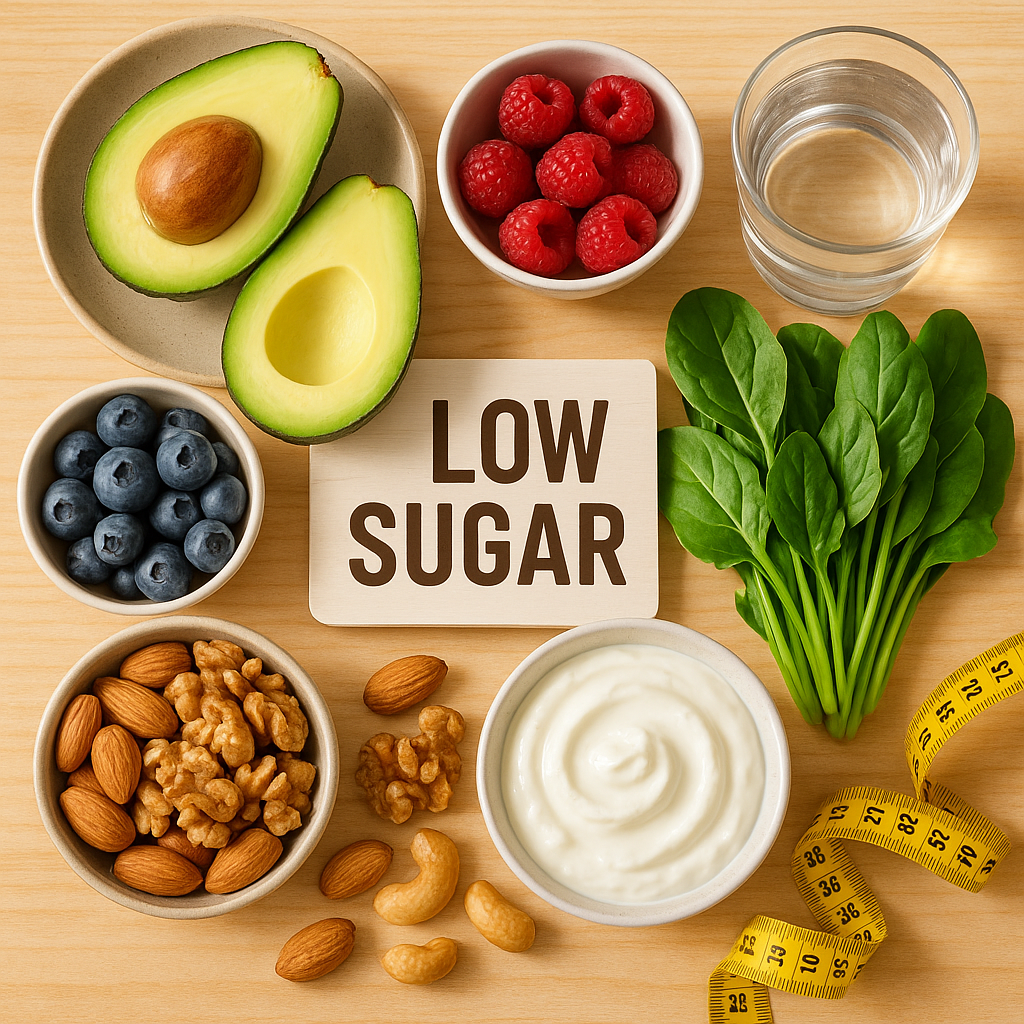
These products are not only low in sugar, but also rich in other nutrients.
1. AVOCADOS
Sugar content: less than 1 g/100 g
Avocados are one of the fruits with the lowest sugar content.
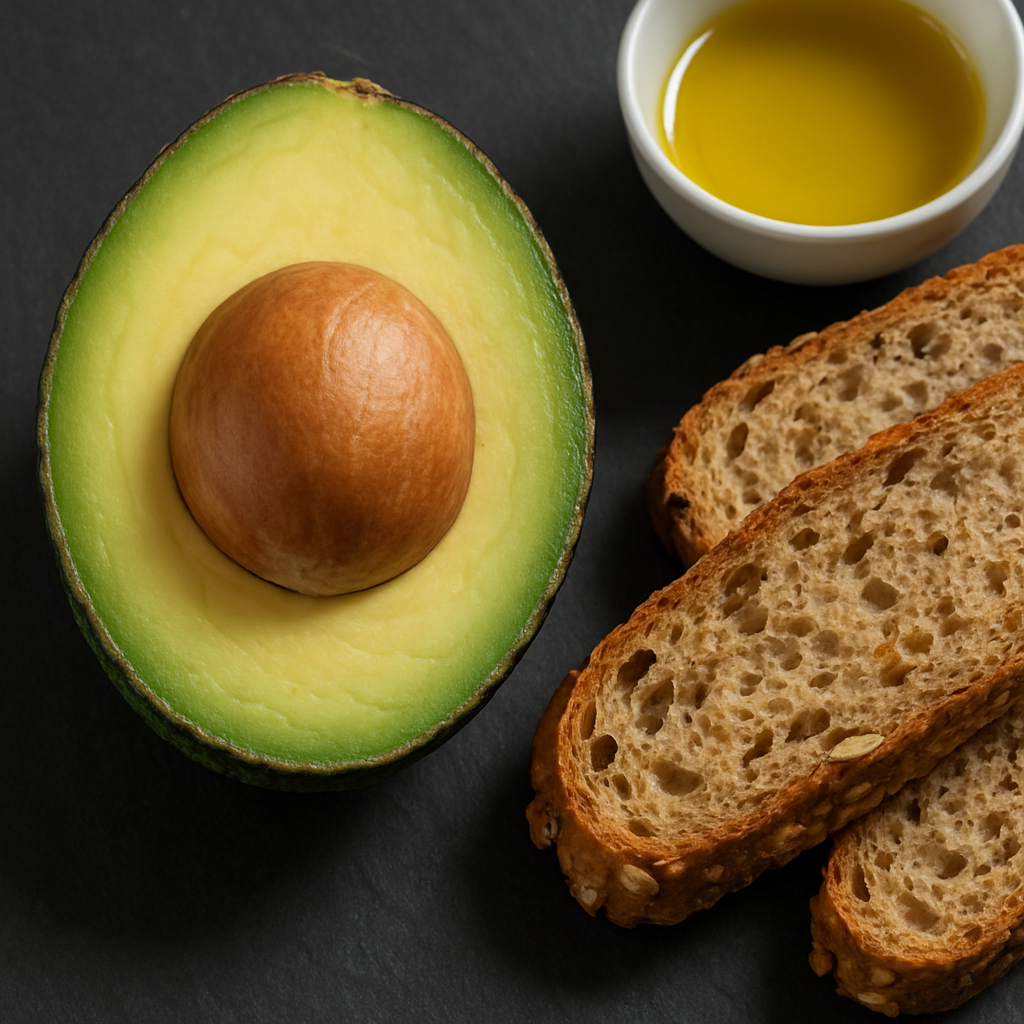
They are rich in healthy fats, especially monounsaturated fats, which help lower bad cholesterol. Avocados are also rich in fiber, potassium, and vitamin E.
How to eat them: Spread on whole grain bread, add to salads, make guacamole, or simply eat them with salt and pepper. Avocados are great as a replacement for fattier spreads on sandwiches.
2. BERRIES (strawberries, blackberries, raspberries)
Sugar content: 4-5 g/100 g
Berries have less sugar than most other fruits, but are rich in antioxidants, vitamins, and fiber.
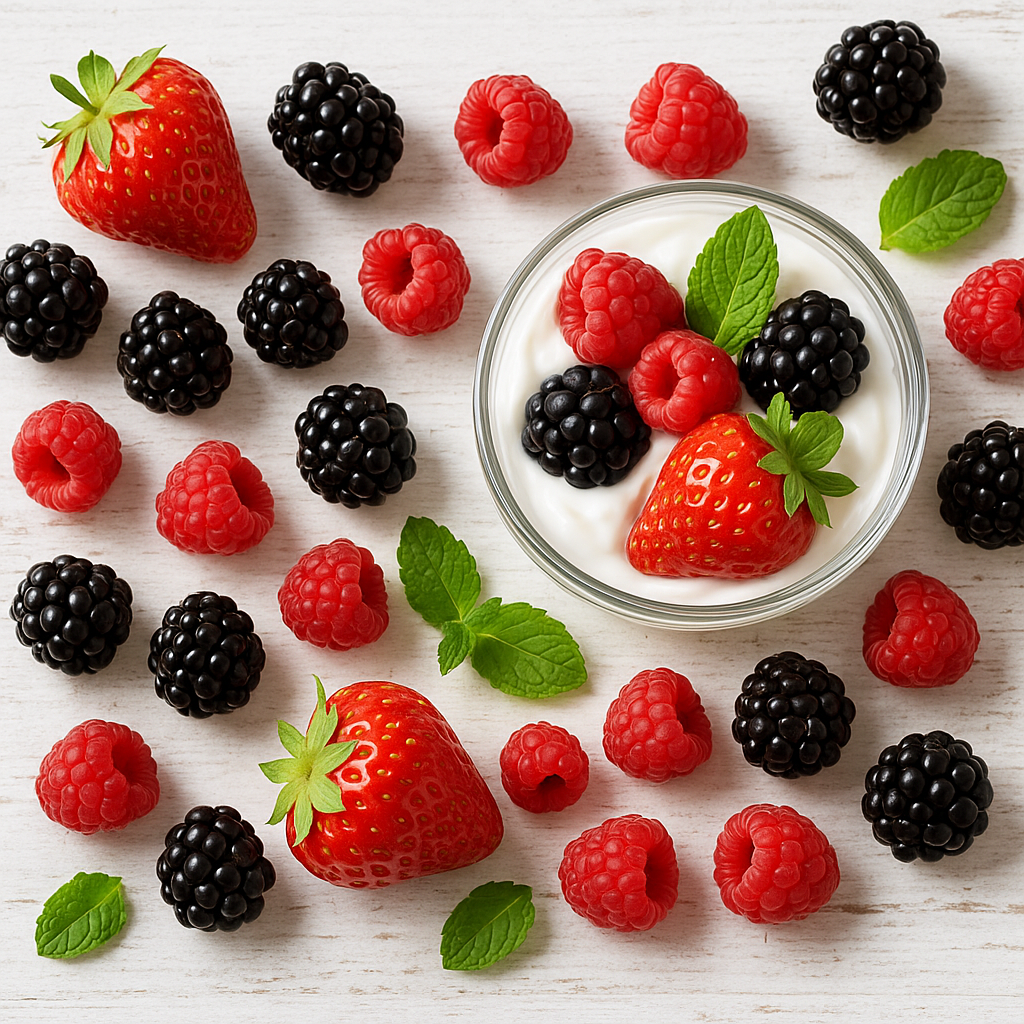
They have a low glycemic index, so they don’t cause a sudden spike in blood sugar.
How to use: Eat fresh as a snack, add to yogurt, porridge, salads or make a smoothie. Berries can be a great alternative to dessert when you want something sweet.
3. CITRUS (lemons, limes, grapefruit)
Sugar content: 2-6 g/100 g
Citrus fruits, especially lemons and limes, are very low in sugar. Grapefruit has a little more, but still less than most other fruits. They are all excellent sources of vitamin C, which strengthens immunity and the body’s overall resistance.
How to use: Squeeze the juice into water, tea or dishes, use in sauces or eat fresh grapefruit. Please note that grapefruit can interact with some medications, so consult your doctor.
4. GREEN APPLES / GRANNY SMITH
Sugar content: 10-12 g/100 g
Although apples have more sugar than the previous products on this list, green apples, especially the Granny Smith variety, have less sugar than red ones. They are high in pectin, a soluble fiber that helps maintain healthy digestion and cholesterol levels.
How to use: Eat fresh as a snack, add to salads, porridge or stew without added sugar. Apples with skin have more fiber, so it is better to eat them unpeeled.
5. KIWI
Sugar content: 9 g/100 g
Kiwis are moderately high in sugar, but they are also high in vitamin C and contain digestive enzymes that help better absorb nutrients. They also have fiber, which slows down the absorption of sugar.
How to consume: Eat fresh, add to salads, smoothies or use as a natural meat tenderizer due to the enzymes it contains.
6. WATERMELON
Sugar content: 6 g/100 g
Although watermelon does contain sugar, the actual sugar content per serving is quite low due to its high water content (about 92%). Watermelons contain lycopene, an antioxidant that has been linked to a reduced risk of heart disease and some types of cancer.
How to consume: Eat fresh as a snack, add to fruit salads or use in refreshing summer drinks.
7. MELON / CANTALOPE
Sugar content: 8 g/100 g
Melon is moderately high in sugar, but is rich in vitamins A and C and antioxidants. Its high water content also helps to keep the body hydrated.
How to consume: Eat fresh, add to salads, smoothies or use as a light snack on hot days.
8. PLUMS
Sugar content: 10 g/100 g
Fresh plums are moderately high in sugar, but they are also rich in antioxidants and fiber. Plums grown in Lithuania are a great choice for lovers of seasonal local food.
How to consume: Eat fresh, bake without added sugar, or stew as an accompaniment to meat dishes. Avoid dried plums, which have a much higher sugar concentration.
9. BROCCOLI AND LEAFY VEGETABLES
Sugar content: less than 2 g/100 g
Broccoli and leafy greens (spinach, kale, lettuce) are very low in sugar and rich in vitamins, minerals, and antioxidants. They are also high in fiber, which helps keep you feeling full.
How to consume: Eat raw in salads, stew, bake, or steam as a side dish. You can add leafy greens to smoothies, soups or stews.
10. NUTS AND SEEDS (pecans, macadamias, walnuts, flaxseeds)
Sugar content: less than 4 g/100 g
Nuts and seeds are very low in sugar and rich in healthy fats, protein and fiber. They help to keep you feeling fuller for longer and stabilize blood sugar levels.
How to use: Eat as a snack, add to salads, porridge, yoghurt or bake without additional sweeteners. It is important to control portions, as nuts are high in calories.
11. NATURAL GREEK YOGURT
Sugar content: 3-4 g/100 g
Natural Greek yoghurt without additives is low in natural sugar and is rich in protein and calcium. It also contains probiotics, which help to maintain a healthy intestinal microflora. If you struggle to get enough fiber from your diet, it’s worth considering a proven digestive supplement to supplement your diet.
How to consume: Eat it plain, add fruit, nuts or seeds, use it in sauces or marinades. Avoid yogurts with added sugar or fruit toppings, which can significantly increase the sugar content.
Practical tips for reducing sugar intake
Cutting down on sugar isn’t easy, especially if you’re used to sweet tastes. But there are some practical ways to do it gradually and sustainably:
- Pair fruit with protein or healthy fats (like an apple with almond butter, berries with Greek yogurt) to slow down the absorption of sugar.
- Choose healthy snacks like vegetables with hummus, nuts, or Greek yogurt snacks instead of sugary bars or cookies.
- Read food labels carefully and learn to recognize the different names for sugar.
- Gradually reduce the amount of sugar in your coffee, tea, or baked goods so your taste buds can adjust.
- Prepare your meals at home so you can control the ingredients and the amount of added sugar.
- Choose whole fruits with the peel instead of juice to get the fiber that slows down the absorption of sugar.
- Experiment with natural flavors and spices like cinnamon, vanilla, or nutmeg to add flavor without adding sugar.
Nutritionist Rasa Juodkazienė recommends: “Start your day with a protein-rich breakfast that doesn’t have added sugar. This will help stabilize your blood sugar levels throughout the day and reduce your cravings for sweets later.”
It’s important to know that inflammation in the body can be linked to sugar consumption. Chlorella’s benefits for reducing inflammation and improving overall health may be an additional tool for those looking to reduce the impact of sugar on the body.
When (and How Much) to Eat Low-Sugar Foods
It’s recommended to include low-sugar foods in your daily diet, but it’s important to know the right time and amount to get the maximum benefit:
Start your day with a protein-rich, low-sugar breakfast, like eggs with vegetables or Greek yogurt with berries and nuts.
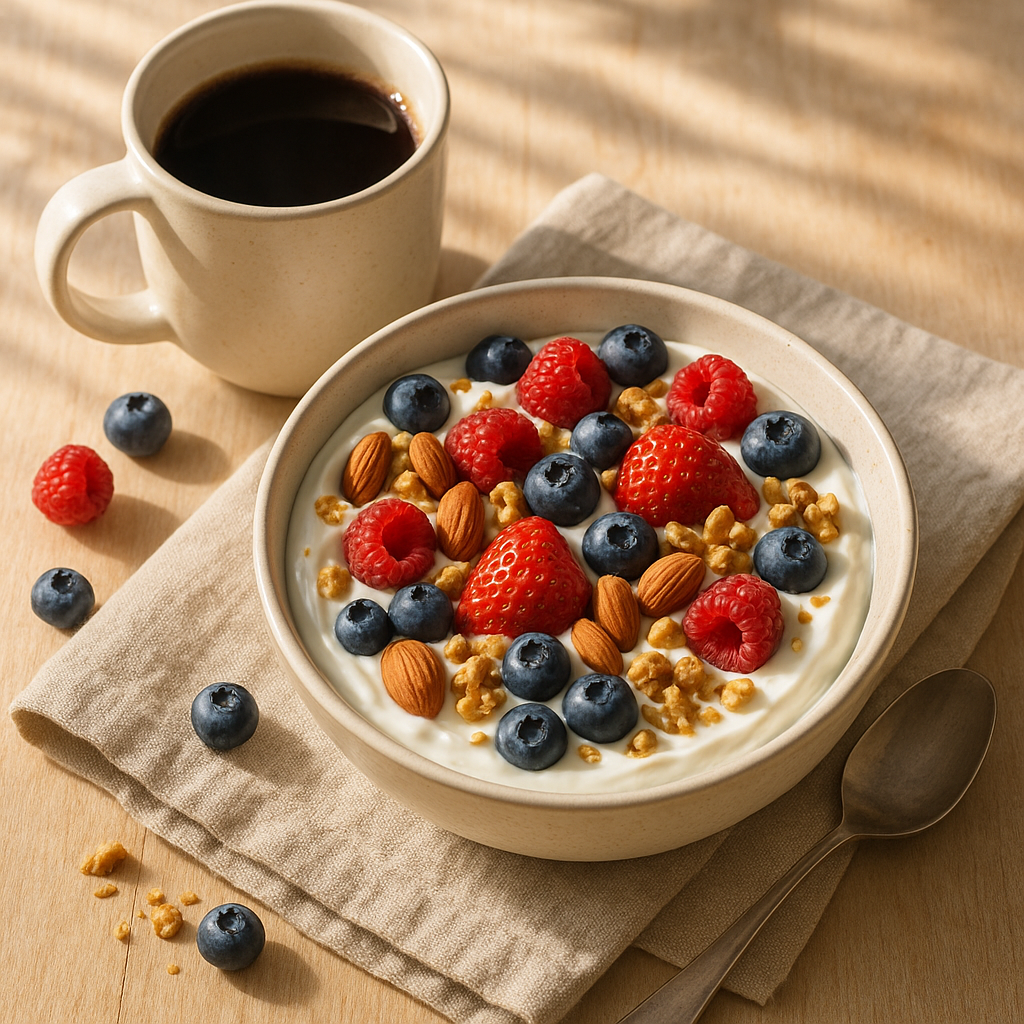
This will give you energy without a sudden increase in your blood sugar.
For snacks between main meals, choose low-sugar foods, such as nuts, vegetables with hummus, or avocado on rye bread. This will help prevent energy drops and cravings for sweets.
After a workout, the body can absorb carbohydrates more quickly, so this may be a good time to eat a fruit that has a little more sugar, such as a banana.
Avoid any sugar in the evening before bed, as it can interfere with quality sleep. Instead, choose low-sugar foods, such as nuts or a small amount of Greek yogurt.
According to the recommendations of the Lithuanian University of Health Sciences, it is recommended that an adult consume no more than 25 grams (6 teaspoons) of added sugar per day. However, this amount may be even lower for people with diabetes or those trying to lose weight.
People with specific health problems, especially diabetes, are recommended to consult a doctor or dietitian for an individual diet plan. Diabetes-friendly foods can vary depending on the type of diabetes and your overall health.
Conclusion
Incorporating low-sugar foods into your daily diet is one of the most effective ways to improve your overall health, reduce your risk of chronic diseases, and maintain an optimal weight. Avocados, berries, green vegetables, nuts, and plain Greek yogurt are great choices that are not only low in sugar but also rich in other valuable nutrients.
It’s important to remember that switching to a lower-sugar diet should be a gradual process. Start with small changes, such as replacing one high-sugar snack with a low-sugar alternative. Over time, your taste buds will adjust and you won’t crave the intense sweetness as much.
Review your weekly menu and try to include several meals or snacks in these low-sugar foods. For additional help with blood sugar control, consider consulting a professional or trying personalized supplement solutions.
Frequently Asked Questions
Which fruits have the least sugar?
Avocados, many berries (especially blackberries and raspberries), lemons, and grapefruit are the least sugary.
Are all low-sugar foods healthy?
Not always. Opt for whole, nutrient-dense foods that are low in sugar. Some foods labeled “sugar-free” may have unhealthy additives.
Can I eat fruit if I have diabetes?
Yes—choose fruits that are low on the glycemic index and high in fiber, eat them in moderation, and pair them with protein or healthy fats to reduce the glycemic impact.
How can I find low-sugar foods when shopping?
Check nutrition labels for total and added sugars, choose whole foods, and avoid highly processed snacks.
Are dried fruits a good low-sugar snack?
Usually not. Dried fruit has much more sugar per gram than fresh fruit, and it often contains added sugar.

